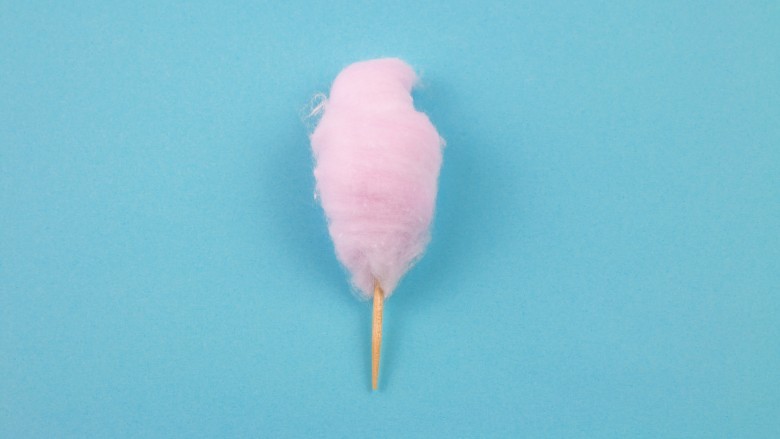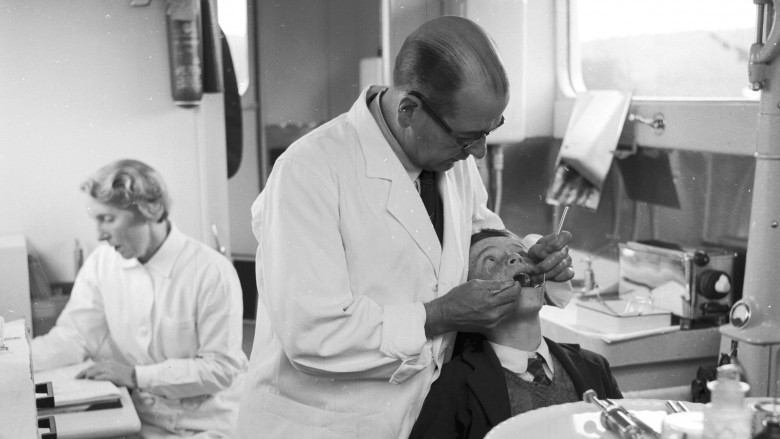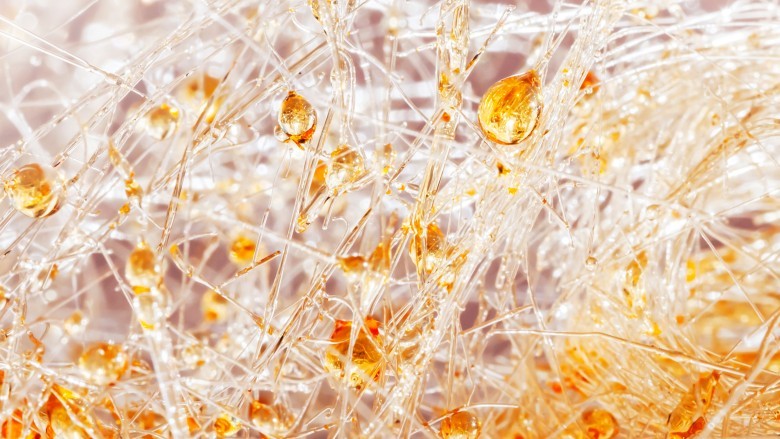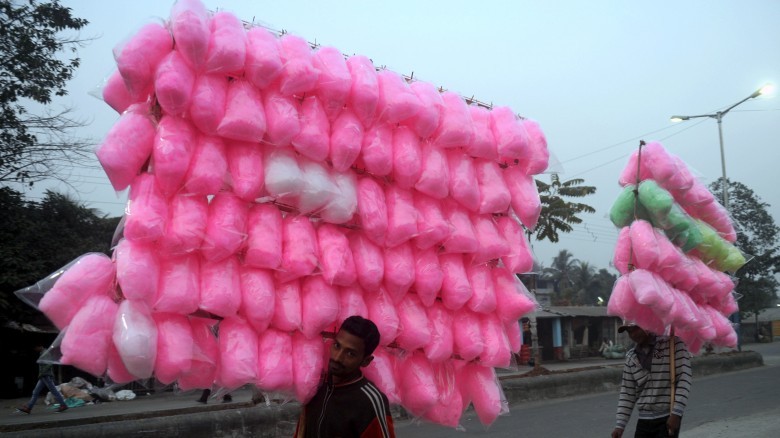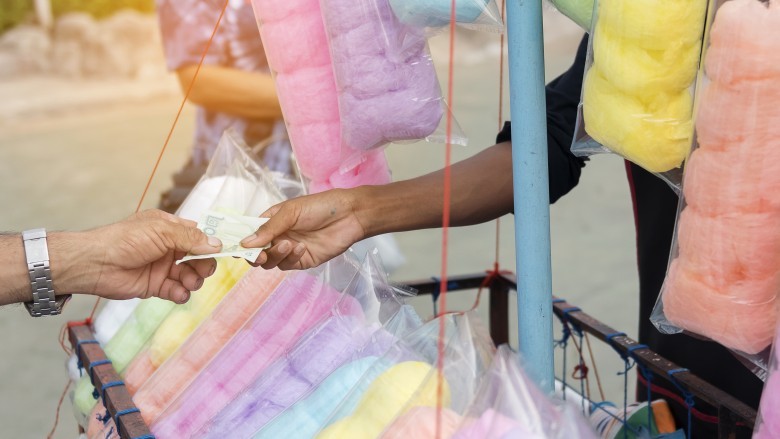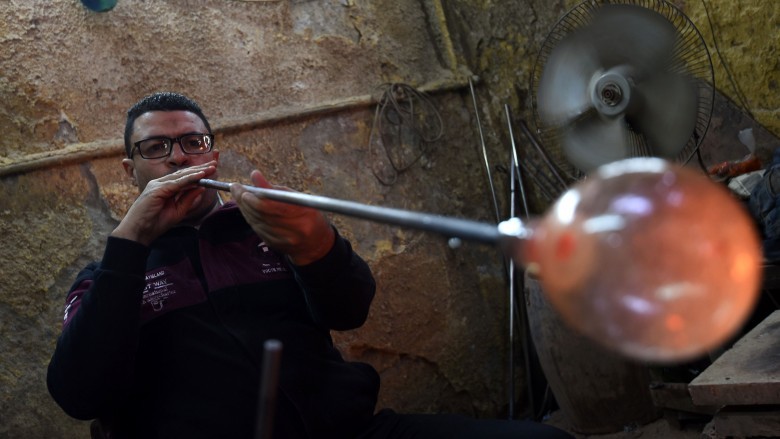The Untold Truth Of Cotton Candy
Cotton candy isn't exactly a mysterious food. You've seen tons of these fluffy clouds of sugar at every fair and theme park. But there's a lot more to this gossamer treat than meets the eye. Find out how cotton candy went from expensive delicacy to a potentially lifesaving product.
A dentist co-invented it
Cotton candy was invented by a dentist. Before you make any "I guess he wanted to guarantee future customers" jokes, know that William J. Morrison was far more than your average tooth doctor. From Nashville, he was a lawyer, author, and leader in political activities, and yes, also a dentist. He wrote children's books to encourage reading at a young age, came up with a lard substitute out of cotton seed, and had personal contact with William Jennings Bryan and President Woodrow Wilson. Oh, and he created a device to chemically clean the drinking water of Nashville. No big deal.
So, between writing kid's books, cleaning the water supply, making fake lard, and chilling with the president, he partnered with John C. Wharton, a local candy maker, and patented an "electric candy machine." Given Morrison's accomplishments, we wouldn't put it past him that he did create this new candy to keep the nation's dental practices afloat.
It debuted at the St. Louis World's Fair
Oh World's Fairs! You've given us so many things! Waffle cones, Cracker Jacks, and Knoxville Sunsphere replicas.
The 1904 St. Louis World's Fair did not disappoint. Morrison and Wharton debuted their candy called "fairy floss" at the event, and it was a hit. Now, in addition to showing the world the glory of spun sugar, the Fair also featured a reenactment of the Boer War, the world's largest pipe organ, and a huge elephant water slide. To be clear, that's a water slide big enough for elephants, not just an elephant shaped slide. That wouldn't be World's Fair worthy. To top off your day, you could nibble on your fairy floss and take in a show from "Jim Key the Educated Horse."
Wait, hold on. Cotton candy has actually been around since the 15th century
America didn't get cotton candy until 1904, but spun sugar has been around a very long time. The basics of fairy floss are just sugar and heat.
Though there are lots of flavors you can add now, back in the 1400s, they kept it simple. Chefs would caramelize pure sugar, then use forks to drizzle the syrup over a broom handle. While the candy was warm and pliable, they could take these fine strands and arrange them into a variety of shapes. It's not that hard to make, but it is time-consuming. Try it at home. See if you get past two forks full before you get sick of throwing sticky syrup all over your kitchen.
Obviously, our modern cotton candy machines make the product a lot faster, but the basic version is nothing new.
It has a lot of different names
Most candies have one name and they stick to it. They didn't make Twix and then decide to call it Two Small Cookie Sticks out of the blue. But cotton candy goes by a lot of names.
In America, we ditched "fairy floss," but in Australia and New Zealand, that's still its given name. The British call it "candy floss," while in South Africa, they go with the slightly confusing "tooth floss." Though we're sure flossing rates are sky high for South African kids, they might not be doing it quite right.
Obviously, the sweet fluff would be called something different in non-English-speaking countries, but few of the translations equal "cotton candy." In Spanish, it's "algodón de azúcar" and Poland has "wata cukrowa," which both mean "sugar cotton." The Dutch go real spooky with the name "Suikerspin," meaning "sugar spider." The Persian treat is "pashmak," meaning wool-like, and France makes it personal by calling it "barbe à papa," aka "dad's beard."
Cotton candy used to cost double what it does now
If you go to the fair today, you can pick up a bag of cotton candy for around $3, sometimes less. But if you wanted the privilege of having some of the very first cotton candy clouds, you had to pay up. At the St. Louis World's Fair, a box of cotton candy cost $0.25. That sounds like a steal, but when you consider that it cost $0.50 for a ticket to the World's Fair, it's a pretty big ticket item. And remember, that ticket got you prime seats to "Jim Key the Educated Horse!"
Adjusted for inflation, each box cost $6.58. That didn't stop Wharton and Morrison from selling more than $65,000 boxes of that sugary fluff.
It's a close relative of glass
Have you ever thought of the molecular structure of cotton candy? Hopefully, the answer is no. But if you are deeply familiar with the spun sugar confection, you'd know that it's very similar to glass.
According to Candy Bites, the Science of Sweets, blown glass ends in a bulb of fluid silica, which is a lot like the melted sugar in a cotton candy machine. When dessert chefs make elaborate creations from spun sugar, that's the same method used by glass blowers to fashion fine crystal.
So, if people reject your idea that eating cotton candy all day is your way supporting the arts, you can now tell them they're wrong.
That raccoon eating cotton candy
One time, a racoon tried to eat cotton candy and was comically confused when it all dissolved in the little pond he put it in. Most of the viewers of the viral sensation assumed the raccoon was washing the treat when the terrible cotton candy dissolution occurred. But alas, we were wrong!
Raccoons dip all of their food in water before eating it, not to wash it, but to get a better feel of what they're eating. Raccoons sense things through touch much more than sight, and when they get their food wet, it helps them understand what might be going into their mouths. Unfortunately, it's the worst way to eat cotton candy, so the raccoon ended up pretty disappointed. But now we all learned more about raccoons and that cotton candy is irresistible to all creatures.
There are cotton candy grapes
If you've been looking for a way to trick your children into eating grapes, you may finally have the answer.
A new breed of "cotton candy grapes" has been bred to taste just like the old World's Fair treat. Grapery has found a way to cross pollinate (by hand by the way) to make new and extra sugary flavors of the fruit. With versions like "Gumdrops" and "Flavor Promise," Grapery is trying to make the phrase "nature's candy" literal.
The Cotton Candy grapes are extremely popular and do taste almost creepily like spun sugar.
You can get gourmet cotton candy with edible glitter
The 110-year-old candy hasn't changed much over the years, but a spate of gourmet cotton candy shops have popped up all over the country. Now instead of getting a mystery bag of blue, pink, and blue/pink, you can try pina colada, apple pie, black licorice, chile mango, ghost pepper, matcha green tea latte, and sage.
Or if you like your desserts with sparkling craft products, you can pick up a cone of "Sparkle Puff," a strawberry variation with edible glitter. Now, since these aren't your normal flavors, you don't pay a usual price. These fancy flavors go for about $6.50 for a 32-oz container, about the price of the original World's Fair fairy floss.
You can make your own cotton candy machine out of household junk
If you can't wait for the next town fair to get yourself a cone of cotton candy, you can make it yourself. Yes, you can do the old broom handle, spun sugar technique of the 1400s, but that might not capture the exact cotton candy flavor. Fortunately, YouTube has a few tutorials on how to make your very own cotton candy machine. Unfortunately, some of those homemade machines seem about as easy to make as a jet engine.
But the YouTube channel Vitalius created a pretty ingenious solution. Using just a cardboard box, some wire, a soda can, a jar lid, and a stick, he created a hand-powered cotton candy machine. It won't work quite as fast as an ordinary machine, but it's an incredibly cheap option that won't leave your kitchen covered in hardened sugar syrup.
Cotton candy machines might be used to make organs
Cotton candy isn't all sugar and smiles. It might save someone's life. According to an article from Vanderbilt University, "Cotton candy machines may hold the key for making life-size artificial livers, kidneys, bones and other essential organs." Yep, the machine that's right between the deep-fried Twinkie stand and the Cornball Express might make artificial organs possible.
One of the more difficult parts of constructing organs is making the capillaries, the smallest of our blood vessels. The capillaries are so small and thin, it's been close to impossible to replicate them. But it's not so impossible with a cotton candy machine. Leon Bellan, an assistant professor at Vanderbilt, has been getting cotton candy machines to produce sugar threads very similar to capillaries in size, density, and pattern. These threads can then become templates to make artificial organs' capillary networks.
Cotton candy might contribute to tooth decay, but its incredible machine could save countless lives and become a miracle of medical technology. That seems like a pretty fair trade.
